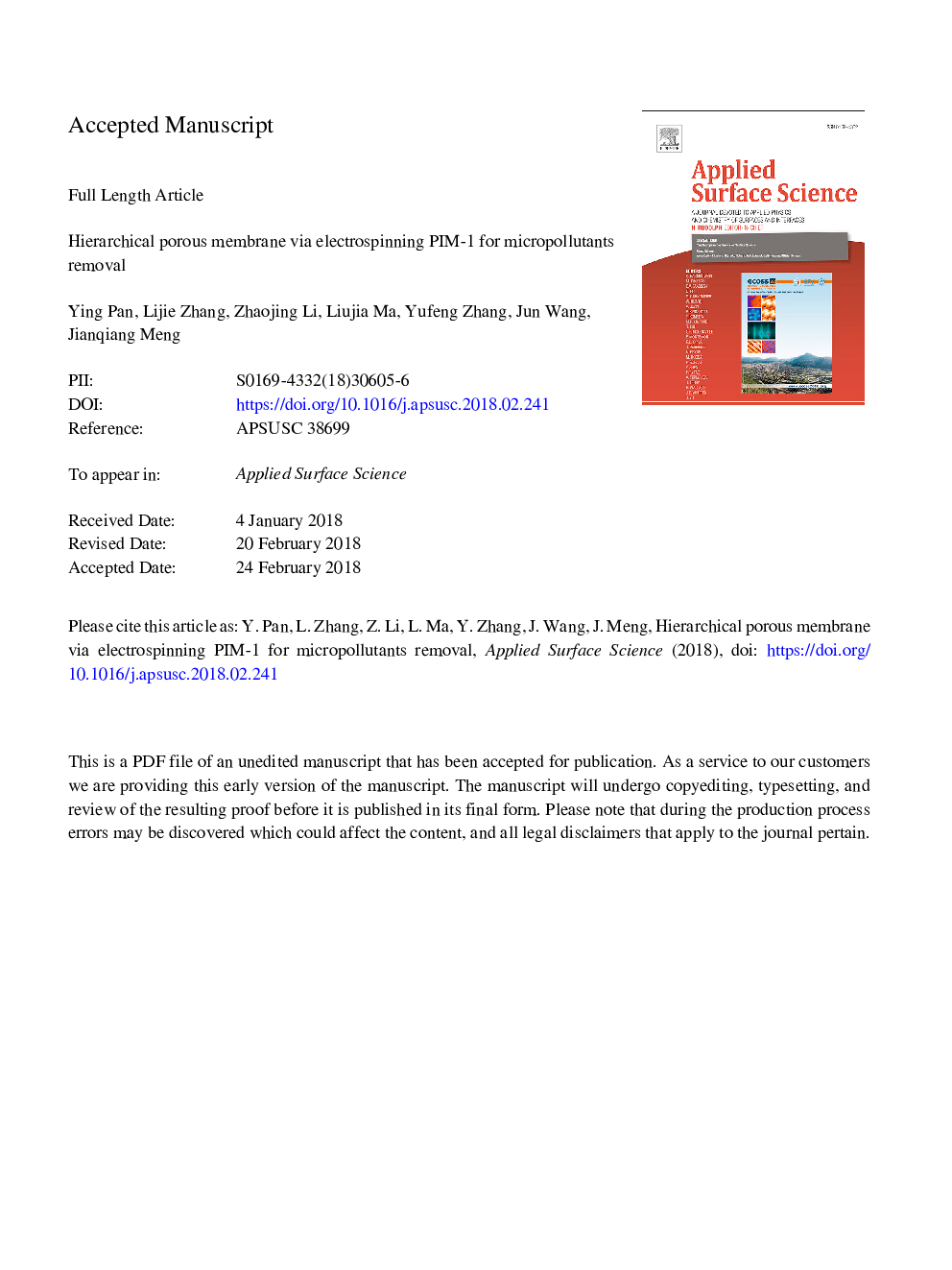| Article ID | Journal | Published Year | Pages | File Type |
|---|---|---|---|---|
| 7834624 | Applied Surface Science | 2018 | 33 Pages |
Abstract
Ideal adsorbents are featured by both high adsorption capacity and high adsorption rate. Current adsorptive membranes enjoy good mass transfer performance but have limited sorption capacity. Microporous organic polymer has superiorities of small pore size and high surface area which is conductive to high adsorption capacity, but usually suffers from high mass transfer resistance. In this work, the polymer of intrinsic microporosity PIM-1 was fabricated into microfiber membranes by electrospinning for carbendazim and phenol adsorption. The PIM-1 and its electrospun membranes were characterized by 1H NMR, GPC, ATR-FTIR, FESEM, TG and BET measurements. The electrospun PIM-1 membrane was demonstrated to have hierarchical porous structure with high surface area. The equilibrium adsorption capacity for carbendazim and phenol was 0.084â¯mmol/g and 0.804â¯mmol/g, respectively. The adsorption isotherm fits well with Langmuir model and the adsorption kinetic can be described by film diffusion and chemical reaction model. The membrane can retain 95% of its initial capacity after cycling 10 times. Both the sorption capacity and kinetic coefficients are high when comparing with other sorbents for either carbendazim or phenol, demonstrating that the electrospun PIM-1 is a good adsorbent.
Keywords
Related Topics
Physical Sciences and Engineering
Chemistry
Physical and Theoretical Chemistry
Authors
Ying Pan, Lijie Zhang, Zhaojing Li, Liujia Ma, Yufeng Zhang, Jun Wang, Jianqiang Meng,
